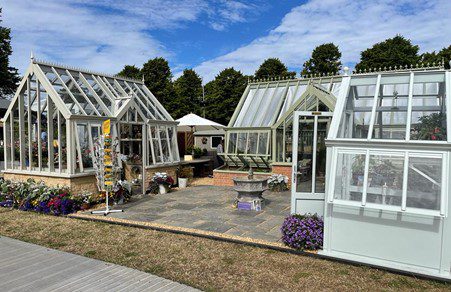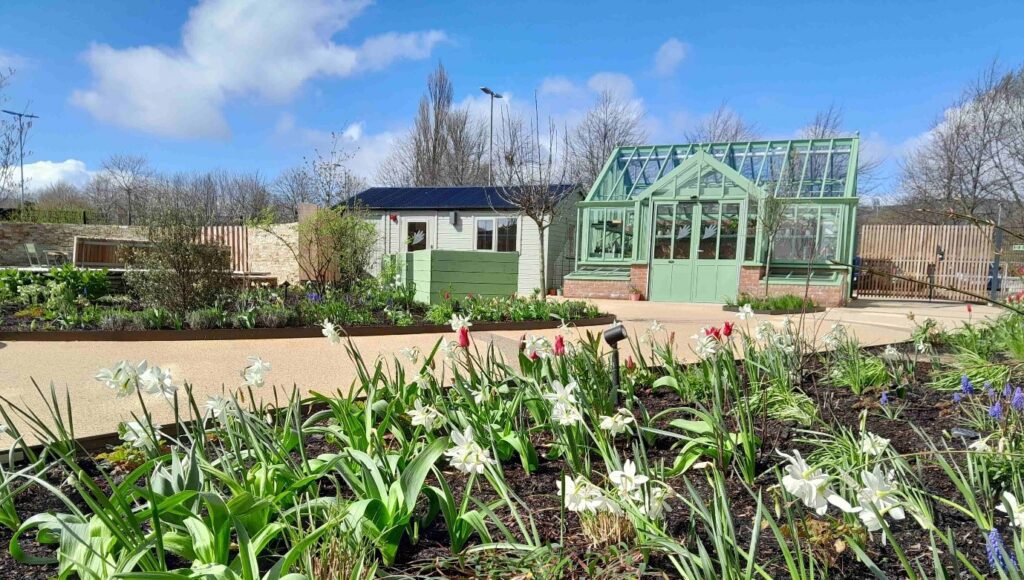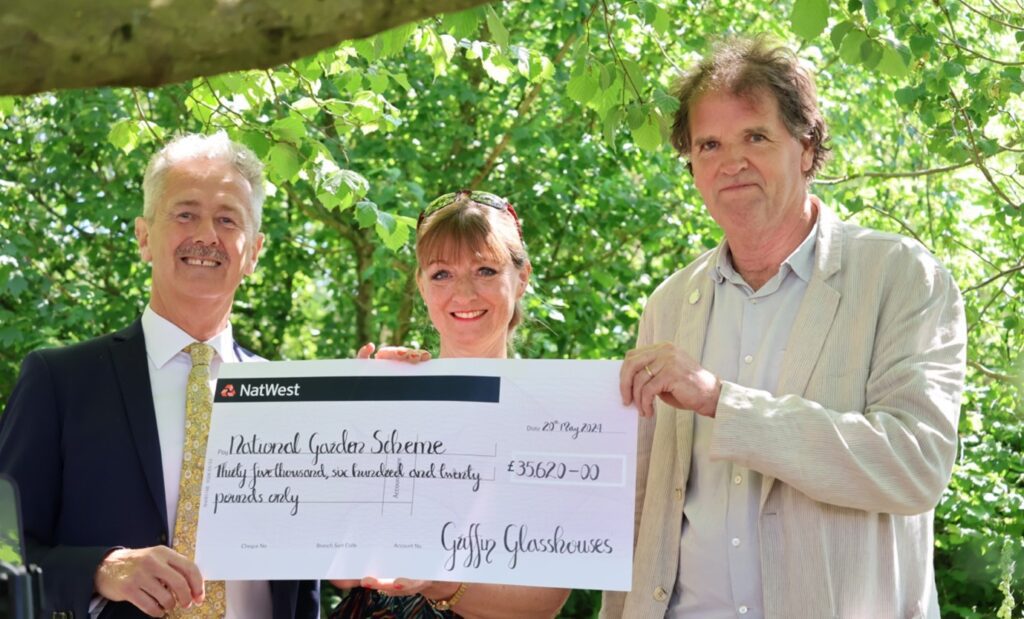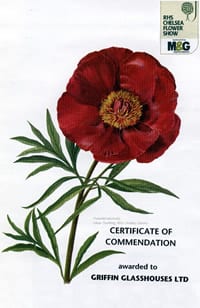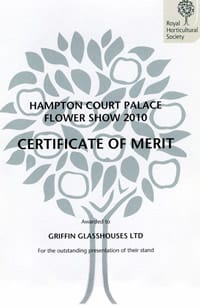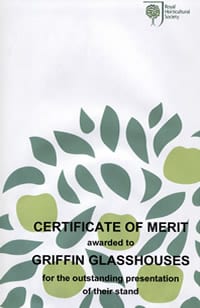Apr
2021
Find Out More About The Pashley Manor Garden, Containing A Griffin Glasshouses & Sculptures And Glorious Stone Features By Chilstone
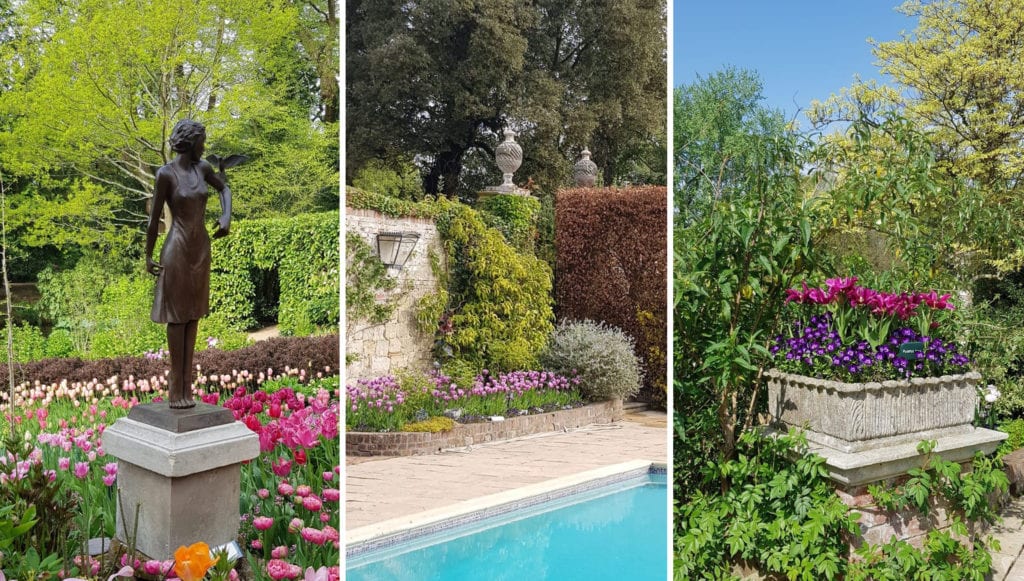
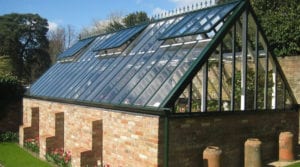
In this feature article, we celebrate the work of both our own team at Griffin Glasshouses and the team at Chilstone who each contributed to the beautiful garden at Pashley Manor. Chilstone have put together this piece on the history of the garden and the features that have been added to it over the years.
Pashley Manor in East Sussex is famous for its annual tulip festival. This is a beautiful spectacle with 43,000 tulips that bloom in April/May. There are one hundred and six varieties planted in colour themed areas. The gardens have been renovated over the past few decades and Chilstone has supplied handcrafted stone garden ornaments to fulfil the garden design. Pashley spans eleven acres and the site has been divided into many unique gardens to celebrate different aspects of gardening from growing kitchen herbs and vegetables to the great tulip beds it is renowned for. Here is a snapshot of a historical estate that has been transformed into a great place to visit.
A Long History
The estate dates back 1457 when it was owned by Sir Geoffrey Boleyn, Mayor of London, who was the great grandfather of Anne Boleyn. The original house was on a moated island, but when the property was sold in 1540 a new Tudor house was built away from the moat which still stands today. The house was extended in the Georgian era, but it wasn’t until the 1980s under new ownership that the gardens were extensively refurbished and opened to the public.
Opening the Landscape
When the current owners bought the property in the 1980s the old walled garden, which was installed in 1720, was very overgrown. When it was cut back it revealed a number of old, dilapidated greenhouses and cold frames. These have since been pulled down and replaced with the beautifully styled Griffin Glasshouse that is used to grow a number of the plants for the seasonal displays around Pashley.
There were also a vast number of ancient trees that dominated the eleven acres. During the 1987 hurricane, thousands of these trees fell. This was a blessing in disguise, opening the space and revealing wonderful views.
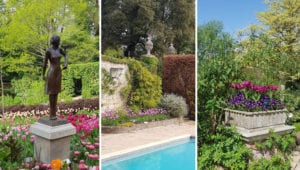
Dividing up the space
With so much land, some of it sloping, the new garden designs divided the space into more intimate and usable gardens. This made the planting and maintenance more manageable but also allowed for each area to be laid out to make a feature of the planting.
In 1990 the Rose Garden and the Rose Walk, lined with espaliered pear trees were installed. A kitchen garden was also planted. Works continued throughout the 1990s with the creation of the Golden Garden, a Bluebell walk, and large herbaceous borders. In the 2010s the swimming pool area was refurbished, with new pool surrounds and balustrades along with and a tea terrace and a feature fountain pond.
Supporting Art
As well as the gardens, Pashley has a beautiful sculpture trail open to the public, which changes each year and the pieces are for sale. One featured sculptor is Ev Meynell, who designed Chilstone’s iconic dove statues and trained Chilstone’s talented sculptor Admir Sljivic, who makes bespoke commissions., including the Leda and the Swan marble resin, contemporary sculpture that was shortlisted for the prestigious Product of the Year award at the RHS Chelsea Flower Show.
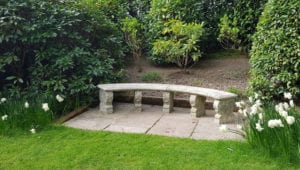
Chilstone at Pashley
Chilstone has handmade cast stone for many homes and properties, from Kensington Palace Gardens to the Temperate House at Kew since it began on the day of the Queen’s coronation in 1953. Chilstone’s pieces are displayed throughout the gardens at Pashley. There are a number of Chilstone urns, including their large Pope’s Urns, which feature as statement finials high above the walled gardens. The stone benches provide tranquil places to admire the view and exquisite planting, and Chilstone’s Regency Square Trough is always overflowing with blooms often grown in the custom-made Griffin greenhouse.



